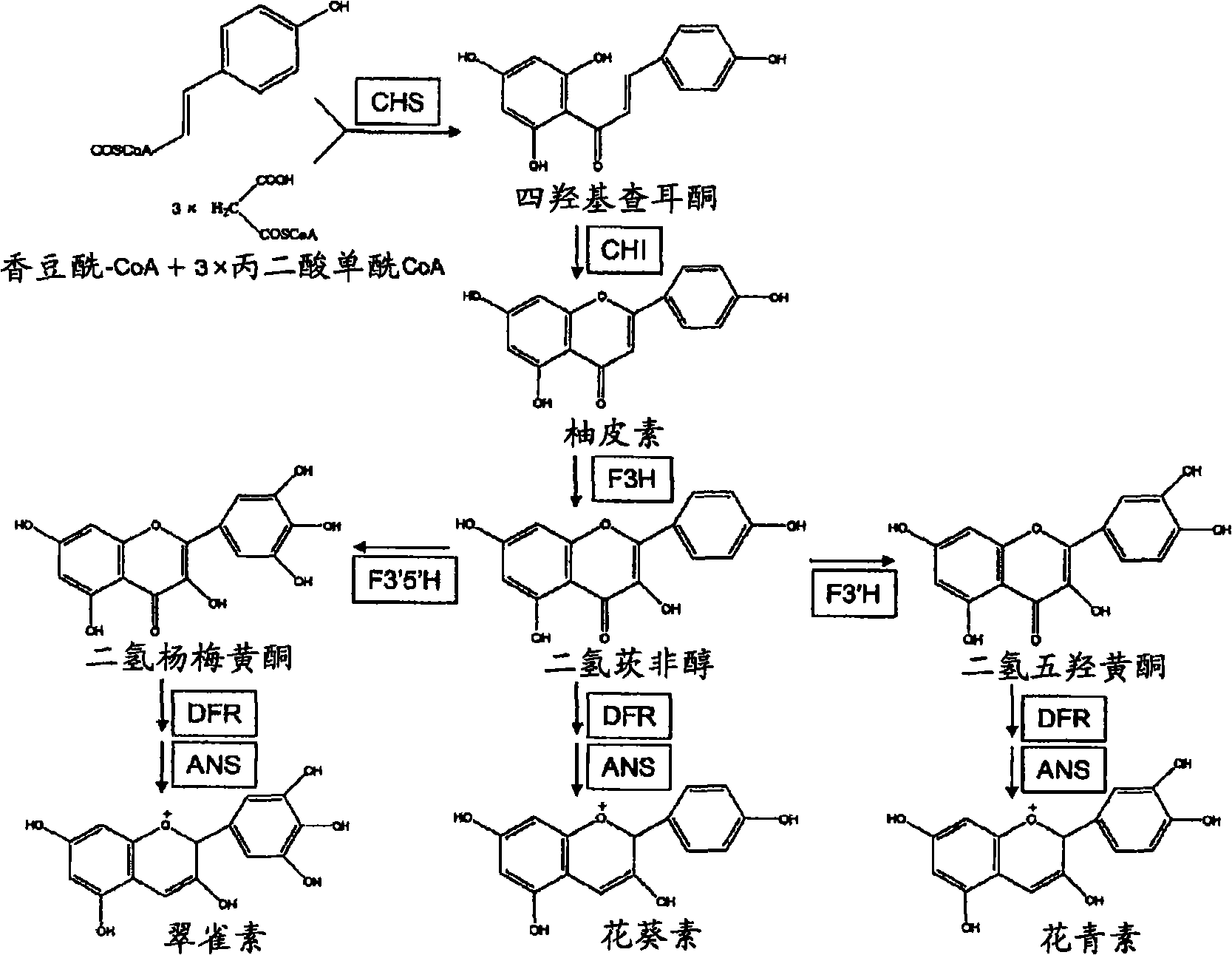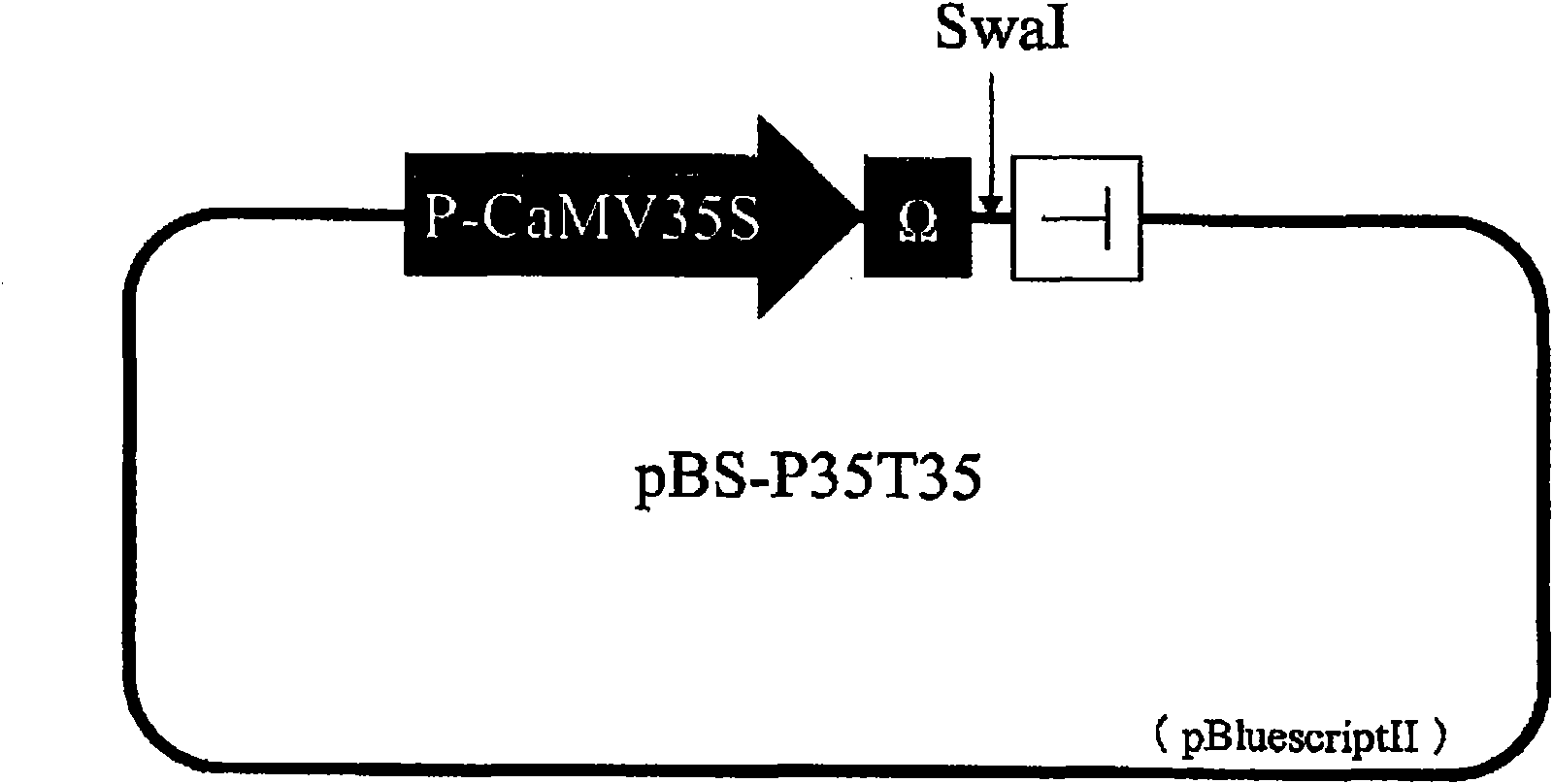Method for production of moth orchid having modified flower color
A manufacturing method and a technology for Phalaenopsis are applied in the field of changing the flower color of Phalaenopsis, which can solve the problems of difficulty in changing the flower color of Phalaenopsis to a desired color and the like
- Summary
- Abstract
- Description
- Claims
- Application Information
AI Technical Summary
Problems solved by technology
Method used
Image
Examples
Embodiment 1
[0060] Example 1 Gene introduction into petals of Phalaenopsis
[0061] In the examples of the present specification, unless otherwise stated, various genes were introduced into petals of Phalaenopsis plants using the gene introduction method described below, and their functions were evaluated. All genes adopt a DNA structure with a promoter on the 5' side and a terminator on the 3' side, and are introduced in the form of expression in petal cells.
[0062] The flower buds of Phalaenopsis were sterilized with 1% sodium hypochlorite aqueous solution for 5 minutes, washed 3 times with sterilized water, then the flower buds were decomposed, and the lateral sepals, back sepals, and petals were placed on the bed containing NDM salt (Tokuhara and Mii , Plant Cell Reports (1993) 13:7-11) and 0.6% agarose on agar medium. In addition, as a flower bud, a flower bud of about 15 mm in length of a plant of the genus Phalaenopsis genus Phalaenopsis was used.
[0063]The introduced DNA was...
Embodiment 2
[0065] Example 2 Preparation of expression vector (pBS-P35T35) for gene introduction
[0066] pBS-P35T35 has cauliflower mosaic virus 35S promoter (Hohn et al., Curent Topics in Microbiology and Immunology (1982) 96:194-236) and tobacco mosaic virus Ω sequence (Gallie et al., Nucleic AcidsResearch (1987) 15:3257-3273), restriction enzyme SwaI site and cauliflower mosaic virus 35S terminator figure 2 ). A plasmid substantially functionally equivalent to this pBS-P35T35 can be constructed as follows.
[0067] After the oligonucleotide SAS-S (5'-CTAGCTAGCGGCGCGCCTGCAGGATATCATTTAAATCCCGGG-3'; sequence number: 17) and the oligonucleotide SAS-AS (5'-CCCGGGATTTAAATGATATCCTGCAGGCGCGCCGCTAGCTAG-3'; sequence number: 18) were heat-denatured, slowly After returning to room temperature, the product was treated with NheI and ligated to the XbaI-EcoRV site of pBluescriptIISK-(Stratagene) to prepare a plasmid DNA with changed restriction enzyme sites, which was pBS-SAS. Using the genome D...
Embodiment 3
[0069] The separation of CHS gene, CHI gene, F3H gene, F3'H gene, DFR gene and ANS gene of embodiment 3 Phalaenopsis and preparation of DNA for transient expression
[0070] (1) Isolation of the CHS gene (PhCHS3) of Phalaenopsis
[0071] Using RNeasy Plant Mini Kit (QIAGEN), total RNA was extracted from the petals of Phalaenopsis (Dtps.SogoVivien×Dtps.Sogo Yenlin) just before flowering, and using the RNA as a template, SuperscriptII First-Strand Synthesis System (Invitrogen) was used to Prepare cDNA. Next, RT-PCR was performed using the cDNA as a template. The primers used in the PCR reaction were PhCHS3 F1 (5'-AAGCTTGTGAGAGACGACGGA-3'; sequence number: 21) and PhCHS3R1 ( 5'-TGGCCCTAATCCTTCAAATT-3'; SEQ ID NO: 22). In the reaction, the steps of 94° C. for 30 seconds, 55° C. for 30 seconds, and 72° C. for 1 minute were repeated 25 cycles. Using this reaction solution as a template, the reaction product was amplified again under the same conditions. The resulting reaction p...
PUM
 Login to View More
Login to View More Abstract
Description
Claims
Application Information
 Login to View More
Login to View More - R&D
- Intellectual Property
- Life Sciences
- Materials
- Tech Scout
- Unparalleled Data Quality
- Higher Quality Content
- 60% Fewer Hallucinations
Browse by: Latest US Patents, China's latest patents, Technical Efficacy Thesaurus, Application Domain, Technology Topic, Popular Technical Reports.
© 2025 PatSnap. All rights reserved.Legal|Privacy policy|Modern Slavery Act Transparency Statement|Sitemap|About US| Contact US: help@patsnap.com



